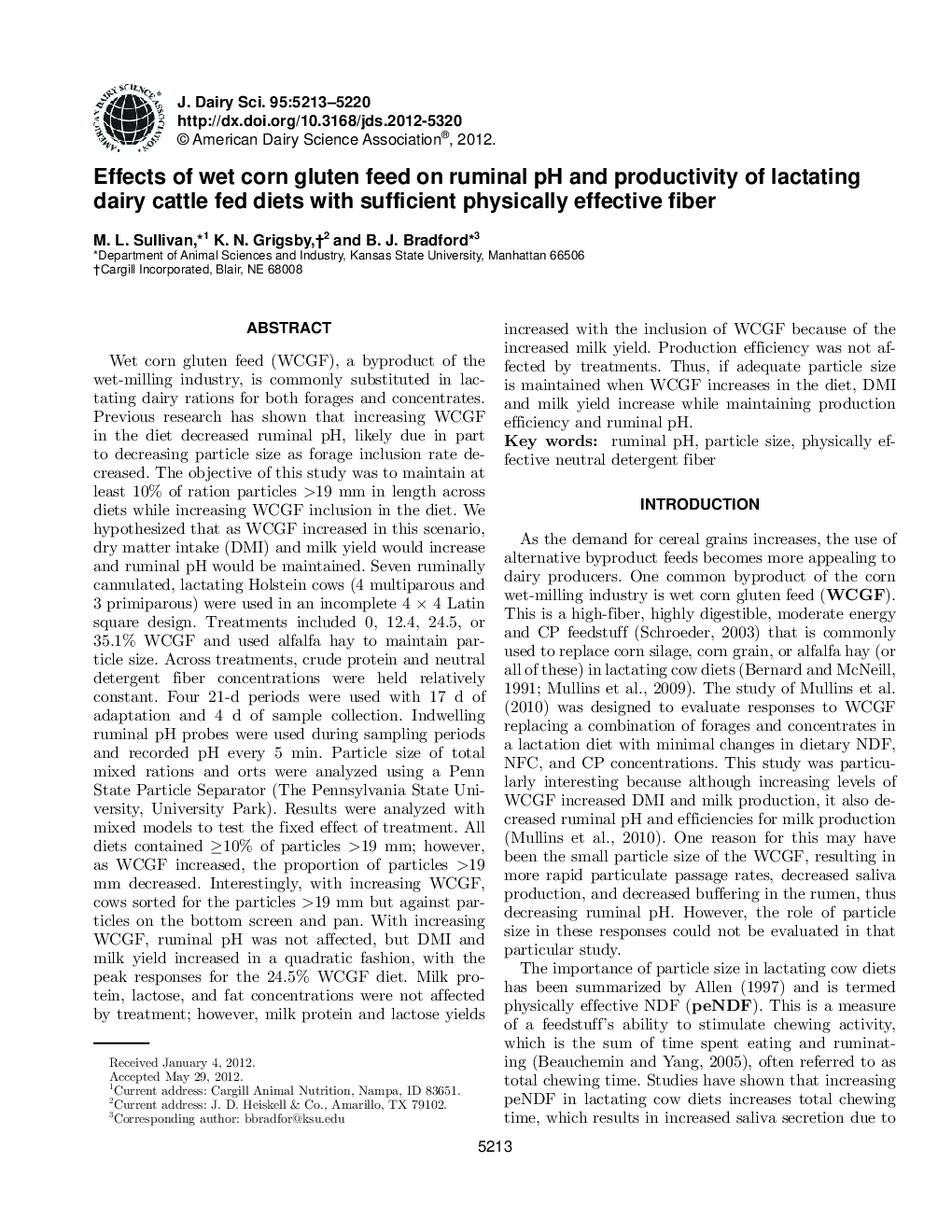| Article ID | Journal | Published Year | Pages | File Type |
|---|---|---|---|---|
| 10976825 | Journal of Dairy Science | 2012 | 8 Pages |
Abstract
Wet corn gluten feed (WCGF), a byproduct of the wet-milling industry, is commonly substituted in lactating dairy rations for both forages and concentrates. Previous research has shown that increasing WCGF in the diet decreased ruminal pH, likely due in part to decreasing particle size as forage inclusion rate decreased. The objective of this study was to maintain at least 10% of ration particles >19 mm in length across diets while increasing WCGF inclusion in the diet. We hypothesized that as WCGF increased in this scenario, dry matter intake (DMI) and milk yield would increase and ruminal pH would be maintained. Seven ruminally cannulated, lactating Holstein cows (4 multiparous and 3 primiparous) were used in an incomplete 4 Ã 4 Latin square design. Treatments included 0, 12.4, 24.5, or 35.1% WCGF and used alfalfa hay to maintain particle size. Across treatments, crude protein and neutral detergent fiber concentrations were held relatively constant. Four 21-d periods were used with 17 d of adaptation and 4 d of sample collection. Indwelling ruminal pH probes were used during sampling periods and recorded pH every 5 min. Particle size of total mixed rations and orts were analyzed using a Penn State Particle Separator (The Pennsylvania State University, University Park). Results were analyzed with mixed models to test the fixed effect of treatment. All diets contained â¥10% of particles >19 mm; however, as WCGF increased, the proportion of particles >19 mm decreased. Interestingly, with increasing WCGF, cows sorted for the particles >19 mm but against particles on the bottom screen and pan. With increasing WCGF, ruminal pH was not affected, but DMI and milk yield increased in a quadratic fashion, with the peak responses for the 24.5% WCGF diet. Milk protein, lactose, and fat concentrations were not affected by treatment; however, milk protein and lactose yields increased with the inclusion of WCGF because of the increased milk yield. Production efficiency was not affected by treatments. Thus, if adequate particle size is maintained when WCGF increases in the diet, DMI and milk yield increase while maintaining production efficiency and ruminal pH.
Related Topics
Life Sciences
Agricultural and Biological Sciences
Animal Science and Zoology
Authors
M.L. Sullivan, K.N. Grigsby, B.J. Bradford,
